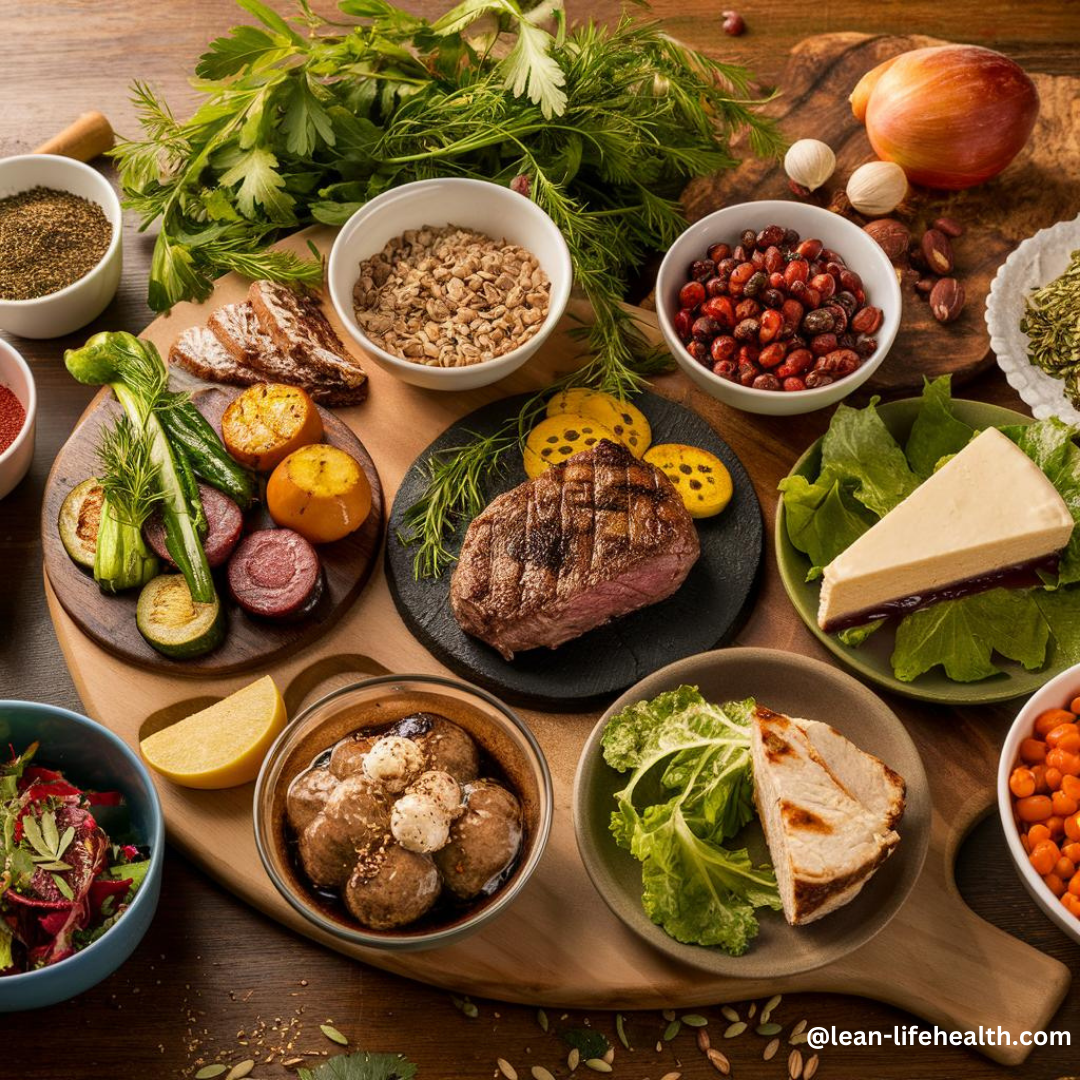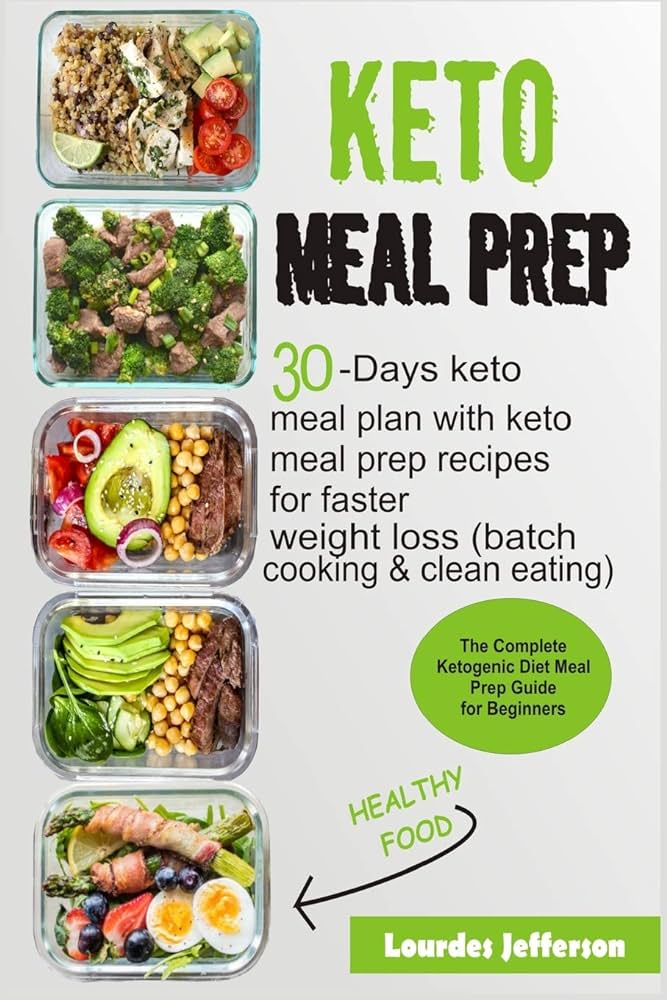Are you looking for a healthy way to improve your energy and wellness? Look no further than the keto diet! This high-fat, low-carb eating plan has been gaining popularity in recent years for its numerous benefits, from weight loss to increased mental clarity. In this guide, I’ll take you through everything you need to know about the keto diet, including tailored meal plans to help get you started.
Key Takeaways:
- The keto diet is a high-fat, low-carb eating plan
- Benefits of the diet include weight loss and improved mental clarity
- Personalized meal plans are essential for success on the keto diet
- Grocery shopping and pantry essentials are crucial for preparing keto meals
- Monitoring progress and adjusting your diet are key to achieving optimal results
Understanding the Keto Diet
The Keto diet is a low-carb, high-fat diet plan that aims to get your body into a state of ketosis where your body burns fat for energy instead of carbohydrates. It achieves this by drastically reducing your carbohydrate intake and replacing it with healthy fats and proteins.
By limiting carb intake, the body is forced to break down fat into ketones and use it for fuel, leading to weight loss and numerous other health benefits. Unlike other diet plans that can be difficult to maintain, the keto diet offers a sustainable solution for individuals seeking a long-term healthy lifestyle change.
Not only does the keto diet offer effective weight loss, but it also helps to improve mental clarity, increase energy levels, and lower your risk of numerous diseases and conditions such as type 2 diabetes, metabolic syndrome, and heart disease.
This healthy diet plan emphasizes the consumption of real, whole foods, including healthy fats like avocados, nuts, and olive oil, high-quality proteins like fish and meat, and low-carb vegetables such as broccoli, asparagus, and kale. By following this diet plan, you can achieve optimal health and a well-balanced diet.
Benefits of the Keto Diet
Following a keto diet has numerous benefits for one’s health and overall well-being. One of the main benefits of this diet is weight loss. By restricting carbohydrates and consuming healthy fats and proteins, the body enters a state of ketosis, where it burns stored fat for energy instead of glucose. This leads to faster weight loss and helps maintain a healthy weight in the long run.
In addition to weight loss, the keto diet has been scientifically proven to improve mental clarity and cognitive function. This is due to the high intake of healthy fats that provide the body with a steady source of energy, leading to better brain function and focus.
Another benefit of the keto diet is increased energy levels. By eliminating carbohydrates, which cause energy crashes and spikes in blood sugar levels, the body is able to maintain a consistent level of energy throughout the day. This is especially beneficial for athletes and individuals who engage in regular physical activity.
Overall, the keto diet is an excellent option for those seeking a healthier lifestyle. Its numerous benefits, including weight loss, improved mental clarity, and increased energy levels make it a popular choice for individuals of all ages.
Getting Started with the Keto Diet
Transitioning to the keto diet may seem daunting, but with a bit of planning and preparation, it can be an enjoyable and straightforward process.
A key first step is creating a personalized meal plan that aligns with your health goals and preferences. This may involve consulting with a nutritionist or researching suitable recipes and food choices online. It’s essential to focus on foods that are high in healthy fats and low in carbs to achieve the desired state of ketosis.
When grocery shopping, be sure to stock up on pantry essentials such as coconut oil, nuts, and seeds, as well as fresh produce like leafy greens, avocados, and berries. Planning meals and snacks in advance can help prevent temptation to stray from the diet.
Essential Pantry Items for the Keto Diet
coconut oil

A versatile and excellent source of healthy fats for cooking and baking Nuts and seeds

Rich in nutrients, and ideal for snacking or adding to meals Low-carb flours Alternative flours such as almond flour and coconut flour, ideal for baking and cooking Non-starchy vegetables

Leafy greens, broccoli, cauliflower, and zucchini are all suitable options for a keto-friendly diet
Berries

Low-carb and antioxidant-rich, berries can be incorporated into desserts or enjoyed as a snack
Adopting the keto diet as a lifestyle change may require adjustments and dedication. Experimenting with new recipes and staying positive and motivated can help maintain consistency and ensure long-term success.
Creating a Keto Meal Plan
One of the keys to successfully following a keto diet is to have a well-planned meal plan. By doing so, you can ensure that you are eating healthy and staying on track with your weight loss goals. Here are some simple steps to create a personalized keto meal plan:
Determine Your Macros
Before you begin planning your keto meals, you need to determine your macronutrient needs. This involves calculating your daily protein, fat, and carb intake. You can use an online macro calculator to help you with this process.
Choose Your Foods
Next, it’s time to pick the keto-friendly foods that you enjoy. Focus on foods that are high in healthy fats, moderate in protein, and low in carbs. Some examples include avocados, nuts, fatty fish, and low-carb vegetables.
Create Your Meal Plan
Once you have determined your macros and chosen your foods, it’s time to create your meal plan. Start by planning out your main meals for the week, such as breakfast, lunch, and dinner. Then, add in your snacks and any other meals you plan on eating throughout the day.
When creating your meal plan, be sure to include a variety of foods and flavors to keep things interesting. You can also experiment with new recipes and flavors to keep your taste buds satisfied and prevent boredom.
Monitor Your Progress
Finally, it’s important to monitor your progress and make adjustments to your meal plan as needed. Pay attention to how your body responds to different foods and adjust your macros if necessary. You can also track your weight loss progress to see how well your meal plan is working for you.
With a little planning and preparation, creating a healthy and delicious keto meal plan can be easy and enjoyable. By following these steps, you can stay on track with your weight loss goals and improve your overall health and well-being.
Healthy Recipes for the Keto Diet
If you’re looking for delicious and healthy recipes that fit into your keto meal plan, look no further! I’ve gathered a selection of my favorite nutrient-rich dishes that will help you diversify your meals while maintaining your keto diet.
1. Keto Zucchini Pizza Bites
If you’re craving pizza but want to stay on track with your meal plan, try these zucchini pizza bites! They’re easy to make and packed with flavor, plus they’re a great way to sneak some veggies into your diet. Just slice some zucchini, top with tomato sauce, cheese, and your favorite pizza toppings, and bake until the cheese is melted and bubbly.
2.Creamy Garlic Shrimp with Zucchini Noodles
This dish is a keto-friendly alternative to traditional pasta dishes. Instead of noodles made from wheat, this recipe uses zucchini noodles to keep the carb count low. The creamy garlic shrimp sauce is made with heavy cream, cheese, and garlic for a rich and satisfying flavor.
3. Keto Green Smoothie Bowl
If you’re in the mood for something quick and easy, try this keto green smoothie bowl. It’s packed with spinach, avocado, and coconut milk for a nutrient-rich breakfast or snack. Customize it with your favorite toppings, like fresh berries or nuts, for added flavor and texture
4. Spicy Keto Chicken Stir-Fry
This stir-fry recipe is a great way to add some heat to your keto diet! It’s made with chicken, low-carb veggies like bell peppers and broccoli, and flavored with sriracha sauce and spices. Plus, it’s ready in under 30 minutes, making it a perfect weeknight dinner option.
5. Keto Lemon Blueberry Cheesecake Bars
If you’re in the mood for something sweet, try these keto cheesecake bars! They’re made with almond flour, cream cheese, and fresh blueberries for a tangy and sweet flavor. Plus, they’re low in carbs and high in healthy fats, making them a perfect keto-friendly dessert option.
Managing Challenges and Staying Consistent
Following a new meal plan can be challenging, and the keto diet is no exception. One of the biggest struggles individuals face is staying consistent with the meal plan. However, there are practical tips that can help keep you on track and motivated:
- Meal prep: Preparing meals in advance can save time and ensure you always have a healthy meal option available.
- Find support: Whether it’s through a friend, online community, or a professional, having support can make a significant difference in your journey.
- Keep it interesting: Eating the same meals every day can get boring. Experiment with new recipes and ingredients to keep your meals exciting and enjoyable.
- Stay hydrated: Drinking enough water is essential for proper digestion and overall health. Aim for at least eight cups per day.
- Track progress: Keeping track of your progress can help motivate you and keep you accountable.
Remember that every journey has its ups and downs, and it’s okay to make mistakes. The key is to stay committed to your goals and focus on the many health benefits that come with following the keto diet.
Monitoring Progress and Adjusting the Keto Diet
As you embark on your keto diet journey, it’s essential to track your progress and make adjustments to your meal plan as needed for optimal results. Consistently monitoring your weight, energy levels, and overall health will give you a better understanding of how your body responds to this healthy diet plan.
One way to keep track of your progress is through weekly weigh-ins and body measurements. Make sure to record your weight, waist size, and body fat percentage to compare with future measurements. Additionally, keeping a food diary detailing what you’ve eaten and the amount consumed can help you identify any areas to change in your diet plan.
Another critical aspect of monitoring your progress is paying attention to your body’s signals. The goal of the keto diet is to achieve ketosis, which is a metabolic state where your body burns fat for energy instead of glucose. As you stay on this diet, you may experience increased energy levels, better mental clarity, and improved sleep quality. If you notice any adverse effects, such as fatigue or digestive issues, you may need to adjust your meal plan accordingly.
Adjusting your keto diet plan can be challenging, but it’s crucial for staying on track towards reaching your goals. Some ways to make adjustments include altering the macronutrient ratios, calorie intake, or meal timing. Consulting with a dietician or healthcare provider can provide valuable insights into your dietary needs and help tailor the program to accommodate your specific health needs.
| Tips for Monitoring Progress on the Keto Diet |
|---|
| Track your weight and body measurements weekly |
| Keep a food diary that details what you eat and how much |
| Listen to your body and adjust your meal plan accordingly |
| Consult with a dietician or healthcare provider for tailored advice |
By monitoring your progress and making adjustments, you can optimize your keto diet plan for healthy weight loss and improved well-being. Keep in mind that the keto diet is not a one-size-fits-all program and may require additional tweaks to suit your body’s needs. With patience, consistency, and determination, you can reap the full benefits of this healthy diet plan.
FAQ
What is the keto diet?
The keto diet is a low-carb, high-fat diet that aims to shift the body’s metabolism into a state of ketosis, where it burns fat for fuel instead of carbohydrates.
Is the keto diet healthy?
The keto diet can be a healthy option for many individuals, as it promotes weight loss, improves mental clarity, and enhances energy levels. However, it is important to consult with a healthcare professional before starting any new diet plan.
How does the keto diet work?
The keto diet works by significantly reducing carbohydrate intake and increasing fat consumption. This reduction in carbs forces the body to use stored fat as its primary source of energy, leading to weight loss and other health benefits.
Can I follow the keto diet if I have dietary restrictions?
Yes, the keto diet can be tailored to accommodate various dietary restrictions, including gluten-free, dairy-free, and vegetarian preferences. There are plenty of keto-friendly alternatives and recipes available for individuals with specific dietary needs.
How do I get started with the keto diet?
To get started with the keto diet, it is important to educate yourself about the foods allowed and restricted on the diet. Creating a meal plan, stocking up on keto-friendly ingredients, and gradually reducing carb intake are essential steps for a smooth transition.
How do I create a keto meal plan?
Creating a keto meal plan involves selecting foods that are low in carbohydrates and high in healthy fats and proteins. It is important to ensure a wide variety of nutrient-dense foods and track macronutrient ratios to stay within the desired range for ketosis.
Are there any healthy recipes for the keto diet?
Absolutely! There are a plethora of healthy and delicious recipes available for the keto diet. From satisfying breakfast options to flavorful main courses and yummy desserts, you can enjoy a wide range of nutrient-rich meals that align with your keto meal plan.
How do I manage challenges and stay consistent on the keto diet?
Staying consistent on the keto diet can be challenging, especially when facing social situations or cravings. It is important to plan ahead, stay motivated, and find support from online communities or a knowledgeable coach to overcome obstacles and maintain consistency.
Should I monitor my progress on the keto diet?
Yes, monitoring your progress on the keto diet is important for several reasons. It allows you to track your weight loss, assess your energy levels, and make necessary adjustments to your meal plan to achieve your desired health and weight goals.
Is it possible to adjust the keto diet to fit my personal needs?
Absolutely! The keto diet can be adjusted to fit your personal needs and preferences. Whether you require a higher or lower calorie intake, specific macronutrient ratios, or have specific dietary restrictions, you can adapt the keto diet to suit your individual goals.
Conclusion
The keto diet is a beneficial meal plan for enhancing health and energy levels by emphasizing nutrient-dense, high-fat foods while restricting carbohydrates. This approach often leads to weight loss, enhanced mental clarity, and increased vitality. Nonetheless, it’s vital to uphold a well-rounded and balanced diet for overall well-being. As I progress on my keto journey, I’ll prioritize whole, unprocessed foods and attentively heed my body’s signals.
Thank you for accompanying me on this exploration of the keto diet, and I wish you all the best on your health journey!





















